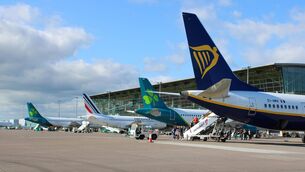‘Nothing to like about the pound’ as Bank of England cuts UK growth outlook on Brexit

Sterling sank to a 30-month low of below $1.21, hurt by a stronger dollar, renewed worries about a no-deal Brexit, and reduced Bank of England forecasts for British economic growth.
It came after the US Federal Reserve’s less-dovish-than-expected policy meeting on Wednesday spurred dollar buying, and before the Bank of England kept interest rates on hold, but cut its growth forecasts amid mounting Brexit concerns.
















